Bacteria are unicellular, free living, microscopic organism with a naked DNA lined with cell wall. Bacterial motility is result of chemotaxis. We will further discuss motile bacteria examples in this article.
While taking about motile bacteria examples, we mostly talk about gram-negative bacteria, because most gram-positive bacteria are artichous, I.e., without flagella, so they are non-motile. Gram-negative bacteria have tiny hair like flagella on their outer surface of the cell wall which helps in motility.
Examples of motile bacteria,
Escherichia coli –
Phylum: Pseudomonadota, Class: Gammaproteobacteria, Order: Enterobacteriales, Family: Enterobacteriaceae, Genus: Escherichia. This rod-shaped bacterium is mostly transmitted through fecal-oral transmission and commonly found at lower intestine of warm-blooded animals. They are mostly harmless but a few strains cause food-poisoning.
About 190 different serotypes are found based on surface antigens. Its circular DNA is 4.6 Mbp in length with 4,288 protein coding genes. Origin of replication in prokaryotic bacteria was first found in E. coli; and is called Ori-C.
Campylobacter jejuni –
Phylum: Proteobacteria, Class: Epsilonproteobacteria, Order: Campylobacterales, Family: Campylobacteraceae, Genus: Campylobacter. It has a genome of 1.64 Mbp and about 1,654 protein coding genes. It spreads from GI tract and pancreatitis, peritonitis, GI hemorrhage etc. U.K. and Europe are mostly affected by C. jejuni.

Helicobacter pylori –
Phylum: Proteobacteria, Class: Epsilonproteobacteria, Order: Campylobacterales, Family: Helicobacteraceae, Genus: Helicobacter. Helical bacteria, cause inflammations in gut mucosa lining. It has 1.67 Mbp genome with 1,576 genes, of which 40 are pathogenicity genes. It causes ulcer, unintentional weight-loss and even promotes cancer.

Listeria monocytogenes –
Phylum: Firmicutes, Class: Bacilli, Order: Bacillales, Family: Listeriaceae, Genus: Listeria. Rod shaped, commonly foodborne bacteria. It has total 13 serotypes based on surface antigen. It has a 2.94 Mbp long genome with 2853 ORFs. It causes listeriosis which infects around 1600 people every year according to CDC and of which about 260 people dies.
Proteus mirabilis –
Phylum: Pseudomonadota, Class: Gammaproteobacteria, Order: Pseudomonales, Family: Pseudomonaceae, Genus: Proteus. This rod-shaped bacterium is well known for causing UTIs. It has a genome length of 4.09 Mbp and 3662 protein coding genes. Creating a ‘Bull’s eye’ pattern while swimming is a medium surface in distinctive characteristic of these bacteria colony.

Pseudomonas aeruginosa –
Phylum: Pseudomonadota, Class: Gammaproteobacteria, Order: Pseudomonales, Family: Pseudomonaceae, Genus: Pseudomonas. Encapsulated, rod-shaped bacteria with high antibiotic resistance, causes nosocomial sepsicemia in humans. Genome length 6.63 Mbp. It mainly causes UTIs, GI tract inflammations, sepsis and ventilator associated pneumonia.
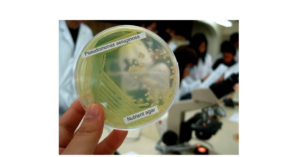
Clostridium tetani –
Phylum: Firmicutes, Class: Clostridia, Order: Clostridiales, family: Clostridiaceae, Genus: Clostridium. C. tetani is rod-shaped endospore forming bacteria, colonizes human and animal intestinal tract. Via blood and lymphatic vessels, it reaches nervous system inhibits neurotransmitter secretion at the end of motor neurons. Tetanus causes sever muscle spasm. The general toxin produced by this bacterium is called tetanospasmin. Chromosome is 2.79 Mbp long and the plasmid responsible for coding tetanus toxin is 74,082 bp long containing 61 ORFs.
Salmonella typhi –
Phylum: Proteobacteria, Class: Gammaproteobacteria, Order: Enterobacteriales, Family: Enterobacteriaceae, Genus: Salmonella. These rod-shaped bacteria cause typhoid in humans, mostly contaminated through unhygienic feeding habits. It has a 4.79 Mbp long genome sequence and about 4000 genes.
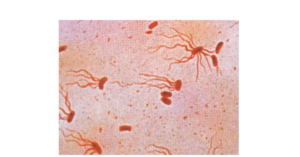
Legionella pneumophila –
Phylum: Proteobacteria, Class: Gammaproteobacteria, Order: Legionellales, Family: Legionellaceae, Genus: Legionella. These fresh water coccobacillus replicates inside protozoans. In human they parasitize and replicates inside alveolar macrophages causing pneumonia. They have singular circular genome, 3.44 Mbp in size with 2,949 protein coding genes.
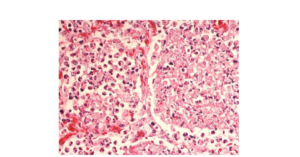
Vibrio cholerae –
Phylum: Proteobacteria, Class: Gammaproteobacteria, Order: Vibrionales, Family: Vibrionaceae, Genus: Vibrio. These comma shaped bacteria are commonly known for causing diarrheal illness, cholera.
It has two circular chromosomes, I.e., chromosome I& II. Chromosome I has 2.96 Mbp nucleotides with 2,770 Open Reading Frames (ORF) and carries the genes responsible for toxicity. Chromosome II has 1.07 Mbp long sequence of which ,115 are ORFs. They are mostly waterborne and contamination mostly occur through unpurified water consumption. The bacteria infect intestine and reduces water retention capacity causing diarrhea and dehydration.
Spirillum volutans –
Phylum: pseudomonadota, Class: Betaproteobacteria, Order: Nitrosomonadales, family: Spirallaceae, Genus: Spirillum. This freshwater bacterium is one of the largest bacteria.
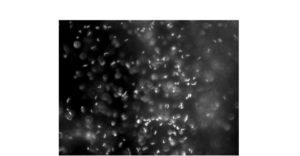
Leptospira interrogans –
Phylum: Spirochaetae, Class: Spirochaetes, Order: Spirochaetales, Family: Leptospiraceae, Genus: Leptospira. This zoonotic coiled bacillus causes acute liver, kidney and lung ailments, it even affects central nervous system. In case of intensive sepsis, it causes hemorrhage in liver and kidney; called Weil’s syndrome. It has a genome sequence of about 4.6 Mbp and 3,400 genes of which 2,962 are protein coding genes.
Yersinia enterocolitica –
Phylum: Pseudomonadota, Class: Gammaproteobacteria, Order: Enterobacteriales, Family: Enterobacteriaceae, Genus: Yersinia. Coccobacilli with a circular genome of 4,553,420 bp and an additional 72,460 pYV03 plasmid. Based on phenotypic markers Yersinia can be further divided into six biotypes. Based on lipopolysaccharide surface antigen, Yersinia can also be divided into O-serogroups.
These biotypes and serogroups are corelated; a few common human serogroup examples are O:9(biogroup 2), O:8(biogroup 1B), O:3(biogroup 4). They cause yersiniosis from eating undercooked pork or contaminated water or milk.
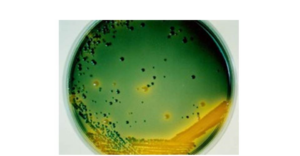
Treponema pallidum –
Phylum: Spirochaetae, Class: Spirochaetes, Order: Spirochaetales, Family: Spirochaeraceae, Genus: Treponema. Helically coiled organisms with 1.14Mbp of genome size. It lacks lipopolysaccharide layer on the outer membrane unlike other gram-negative bacteria. These bacteria cause syphilis in humans. Due to having very low content of surface proteins exposed on the outer cell membrane they are highly evasive of host immune system.
Morganella morganii –
Phylum: Pseudomonadota, Class: Gammaproteobacteria, Order: Enterobacteriales, Family: Enterobacteriaceae, Genus: Morganella. Straight rod-shaped bacterium, opaque in color in agar-agar medium. Generally found in intestine of mammals and reptiles. 3.82Mbp genome size with 3,565 different protein coding genes, 72 tRNA genes and 10 rRNA genes.
It is an opportunistic bacterium that causes various post-operative septicemia in health-care facilities because of a high antibiotic resistance. A few such diseases are sepsis, various localized abscess, septic arthritis, meningitis and UTIs.

Providencia stuartii –
Phylum: Pseudomonadota, Class: Gammaproteobacteria, Order: Enterobacteriales, Family: Enterobacteriaceae, Genus: Providencia. Straight rod-shaped bacterium, one of the most common species of this genus. Commonly found in water and soil. It has total 4,402,109 bp of nucleotides containing circular DNA and 4,194 genes, of which 4,099 are protein coding genes, 7 rRNA genes and 75 tRNA genes. It causes UTIs, especially in elderly people under longer exposure of urinary catheters.
Afipia birgiae –
Phylum: Pseudomonadota, Class: Alphaproteobacteria, Order: Rhizobiales, Family: Bradyrhizobiaceae, Genus: Afipia. Rod-shaped bacterium with a genome size of 5,325,467 bp; 5,160 protein coding genes and 50 tRNA genes and 3 rRNA genes. A. birgiae was isolated from hospital water in association with amoeba co-culture. It causes nosocomial septicemia.
Mycoplasma pneumoniae –
Phylum: Mycoplasmatota, Class: Mollicutes; Order: Mycoplasmatales, Family: Mycoplasmataceae, Genus: Mycoplasma. Very small parasitic organisms without any cell walls and periplasmic space. The genome size is around 687genes. Having smaller genome size restricts its capabilities. Usually not free-living, survives by parasitizing the respiratory tract of host organisms and causes bacterial pneumonia.
Bascillus cereus –
Phylum: Firmicutes, Class: Bacilli, Order: Bacillales, Family: Bacillaceae, Genus: Bacillus. It’s a rod-shaped organism with clear cut ends. Circular genome with 5.41 Mbp sequence, of which 5234 are protein coding genes. In gut it competes with other bacteria such as Salmonella and reduces their number significantly. These organisms are mostly found in raw food materials like poultry, rice etc. They can cause food poisoning and sometimes ophthalmitis.
Alcaligenes faecalis –
Phylum: Pseudomonadota, Class: Betaproteobacteria, Order: Burkholderiales, Family: Alcaligenaceae, Genus: Alcaligenes. These small pathogenous rod-shaped bacteria have a 35,451 bp long genome sequence. They are highly antibiotic resistant and cause urinary tract, skin and soft tissue and ear inflammation
Also Read:
- Bees examples
- Unicellular plants examples
- Mantis shrimp types
- Chromosome functions in animal cell
- Semiconservative dna replication process
- Mesophilic bacteria examples
- Independent assortment in meiosis 2
- Gamete
- Are proteins molecules
- Monophyletic group example
Hi…..I am Pratyush Das Sarma, I have completed my Master’s in Biotechnology. I always like to explore new areas in the field of Biotechnology.
Apart from this, I like to read and travel.